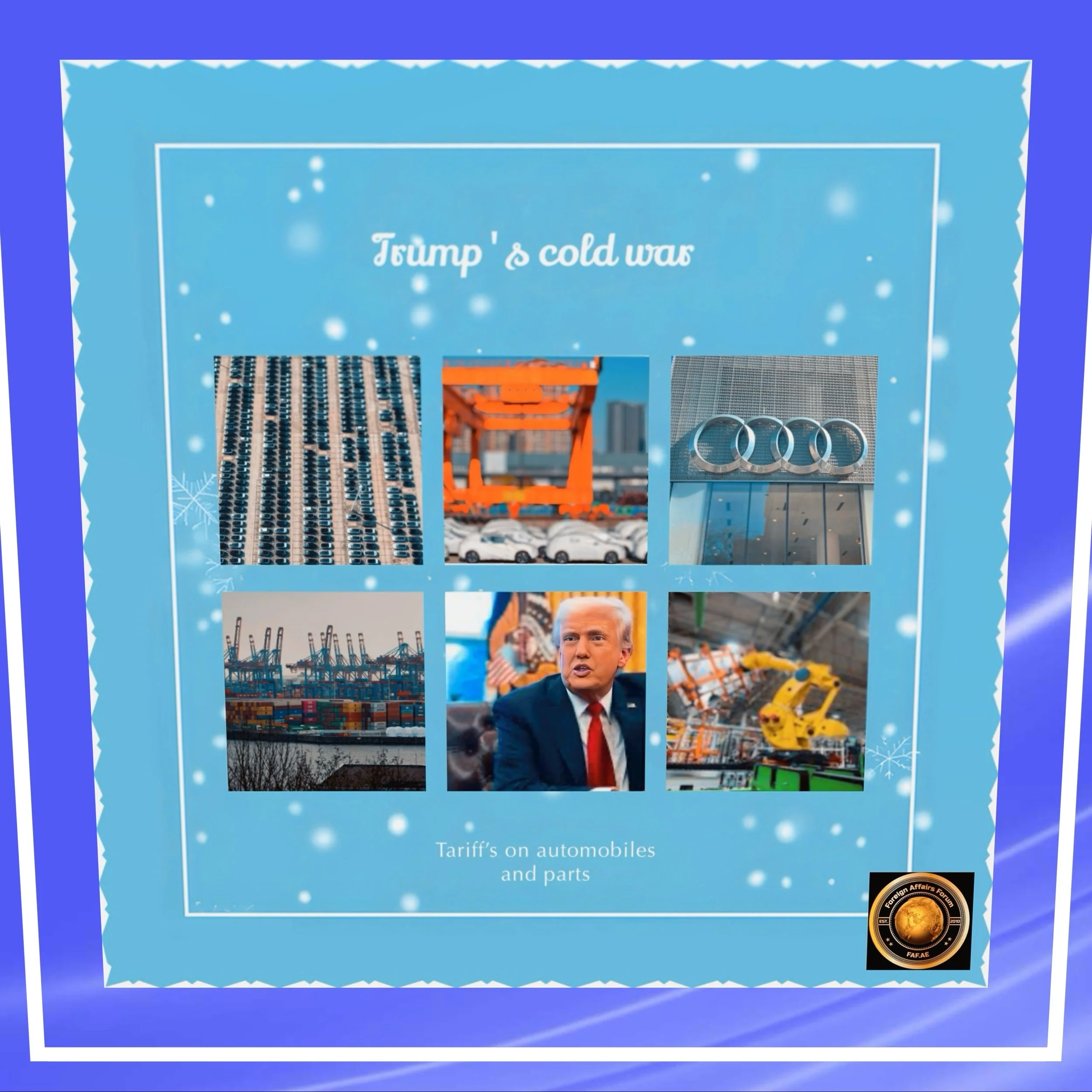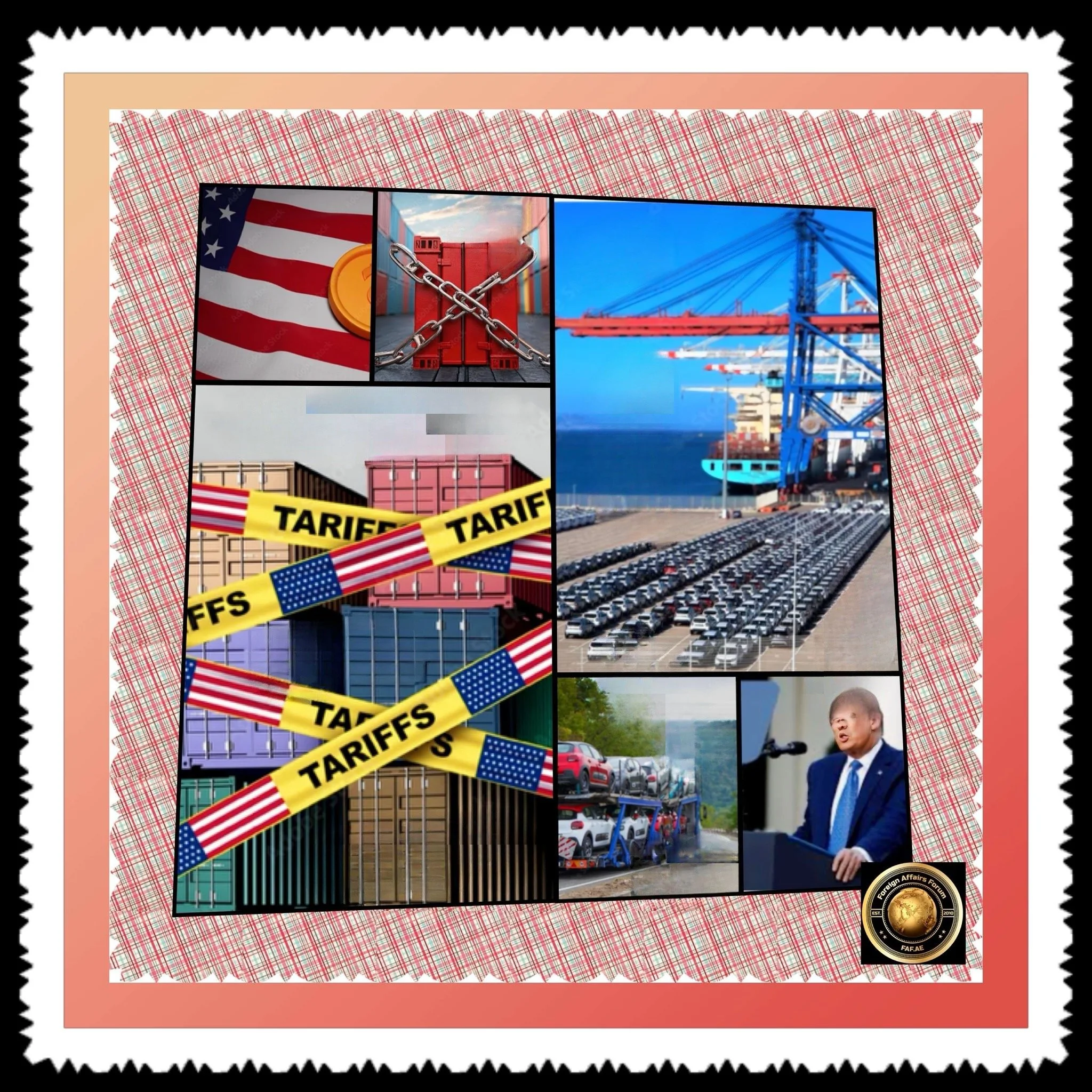Trump’s 25% Auto Tariffs: Global Implications and International Reactions
Introduction
On March 26, 2025, President Donald Trump announced a 25% tariff on imported automobiles and parts, marking a significant shift in U.S. trade policy.
The tariffs, which will take effect on April 2, will apply to all vehicles and critical components not manufactured in the United States.
This decision represents the latest move in an escalating global trade war and has prompted varied reactions worldwide.
Details of the Tariff Implementation
The newly announced 25% tariff will be applied in addition to existing duties on imported vehicles and parts, a substantial increase from the current 2.5% base rate for automotive imports.
The policy extends beyond finished vehicles to include essential components such as engines, transmissions, powertrains, and electrical parts. While the tariffs on completed cars will take effect on April 2, implementing duties on parts may be delayed until May 3.
The White House has stated that importers bringing in vehicles and parts under the United States-Mexico-Canada Agreement (USMCA) will be able to certify what portion of their products are American-made, allowing them to pay tariffs only on “non-US content.”
Trump has framed these tariffs as “modest” despite their potential for significant market disruption, claiming they will “spur growth like you haven’t seen before.”
Economic Impact on Global Markets
Financial markets responded immediately to the announcement with notable declines. Following the news, automotive stocks tumbled globally:
U.S. manufacturers
General Motors saw its stock drop by 8%, while Ford and Stellantis each fell approximately 4.5%
Asian automakers
Toyota, Honda, and Hyundai experienced declines of around 3%
Even Tesla, which manufactures all its U.S.-sold vehicles domestically but uses some imported parts, saw its shares decrease by 1.3%
Economists project significant price increases for consumers, with estimates ranging from $3,000 to $12,200 per vehicle, depending on the model and implementation specifics.
These price hikes could substantially dampen new car sales and potentially trigger job losses throughout the global automotive supply chain.
Cox Automotive anticipates “significant disruption to virtually all North American production by mid-April, resulting in a reduction of 20,000 vehicles produced daily, approximately a 30% decline in output”.
This production slowdown could have cascading effects throughout the economy.
Regional Responses and Implications
European Union Reaction
European Commission President Ursula von der Leyen strongly condemned the tariffs as “bad for businesses, worse for consumers.”
The EU has deeply regretted the U.S. decision and pledged to seek negotiated solutions while safeguarding its economic interests.
The European market, a significant exporter of luxury and high-end vehicles to the U.S., stands to be heavily impacted.
The German automotive industry association VDA labeled the tariffs “a fatal signal for free and rules-based trade” and called for immediate negotiations between the U.S. and EU.
The organization emphasized that this trade conflict could have negative consequences for the entire global economy.
Impact on Canada and Mexico
The tariffs pose particular challenges for Canada and Mexico, which are deeply integrated into North American automotive supply chains through the USMCA.
Canadian Prime Minister Mark Carney characterized the tariffs as a “direct attack” on Canadian workers and warned of potential retaliatory measures.
Ontario Premier Doug Ford warned that steep tariffs on Canada could cause auto manufacturing throughout North America to “grind to a halt within as few as 10 days”.
The disruption to supply chains established over decades of regional integration could severely damage all USMCA member nations.
Asian Markets and Manufacturers
Japanese and South Korean automakers were hit particularly hard by the announcement.
In Tokyo, where the auto industry accounts for over a quarter of exports to the U.S., Toyota Motor and Mazda Motor led stock declines.
Similarly, shares of South Korean automakers Hyundai Motor and Kia Corp fell sharply.
Japanese Prime Minister Shigeru Ishiba indicated that Tokyo would “consider all options” in response to the new tariffs.
The tariffs could significantly impact Asian manufacturers’ U.S. market strategies, potentially accelerating plans to increase domestic U.S. production.
Brazil and South America
Brazilian President Luiz Inacio Lula da Silva warned that Trump’s tariffs could harm the U.S. economy rather than help it. “It will raise the prices of goods and could lead to inflation that he hasn’t yet realized.
Protectionism doesn’t help any country in the world,” Lula stated during a press conference in Tokyo.
Brazil plans to lodge a formal complaint with the World Trade Organization over tariffs on Brazilian steel and is considering imposing higher tariffs on American products in retaliation.
Lula emphasized that Brazil “cannot stay quiet” in the face of these trade actions.
Auto Industry Response
Industry reactions have been predominantly adverse, with concerns about disrupted supply chains and increased costs.
Sam Fiorani, an analyst at AutoForecast Solutions, noted: “Companies that have invested hundreds of millions and billions of dollars on plants in Canada and Mexico will likely see their profits cut dramatically over the next few quarters, if not into a couple of years.
We’re going to consider adjusting our sales and production forecasts because this will throw everything into chaos. “
Jessica Caldwell of Edmunds warned about cascading consumer impacts: “Many vehicle parts are sourced globally, which would increase repair costs for car owners and reconditioning costs for dealers.
Insurance premiums will likely increase as accidents involving new parts incur increased costs. “
The United Auto Workers Union’s position appeared mixed across different reports.
In some instances, the union expressed concern that tariffs could “damage the competitiveness and export readiness of an industry that relies on integrated international supply chains.” At the same time, other statements suggested support for potential job creation in U.S. manufacturing.
Broader Trade War Context
These auto tariffs represent a more considerable escalation in Trump’s trade policies. Earlier in March, the administration imposed 25% tariffs on all steel and aluminum imports.
The EU and Canada have already responded with retaliatory measures targeting specific U.S. goods.
April 2, 2025—which President Trump has dubbed “Liberation Day”—is expected to see the implementation of additional “reciprocal” tariffs against major U.S. trading partners.
Trump has also announced plans for tariffs on lumber, semiconductor chips, and pharmaceuticals, creating significant uncertainty in global markets.
Political and Economic Strategy
The Trump administration aims to boost domestic manufacturing and protect what it perceives as threats to America’s industrial base and supply chains.
White House statements argue that “foreign automobile industries, bolstered by unfair subsidies and aggressive industrial policies, have expanded, while U.S. production has stagnated.”
However, critics argue these tariffs may undermine the administration’s stated goals.
Rather than coordinating an international response to shared concerns such as Chinese state subsidies and overcapacity, U.S. tariffs complicate partners’ calculations, forcing them to navigate between competing economic powers.
Since Trump’s election, traditional U.S. trade partners have accelerated efforts to diversify their economic relationships.
The EU has struck deals with MERCOSUR, concluded an agreement with Mexico, advanced negotiations with India, and relaunched talks with Malaysia.
This suggests a global shift toward hedging against U.S. trade unpredictability.
Conclusion
Trump’s 25% auto tariffs represent a significant escalation in global trade tensions with far-reaching implications.
While the administration frames these measures as protecting American manufacturing and jobs, the immediate market reaction suggests economic disruption and potential price increases for consumers.
The international community has responded with concern and, in many cases, plans for retaliatory measures.
As the April 2 implementation date approaches, global markets remain on edge about the potential for further escalation and the long-term reshaping of international trade relationships.
The economic and political consequences of this policy shift will likely unfold over months and years as supply chains adjust and trading partners recalibrate their relationships with the United States.






